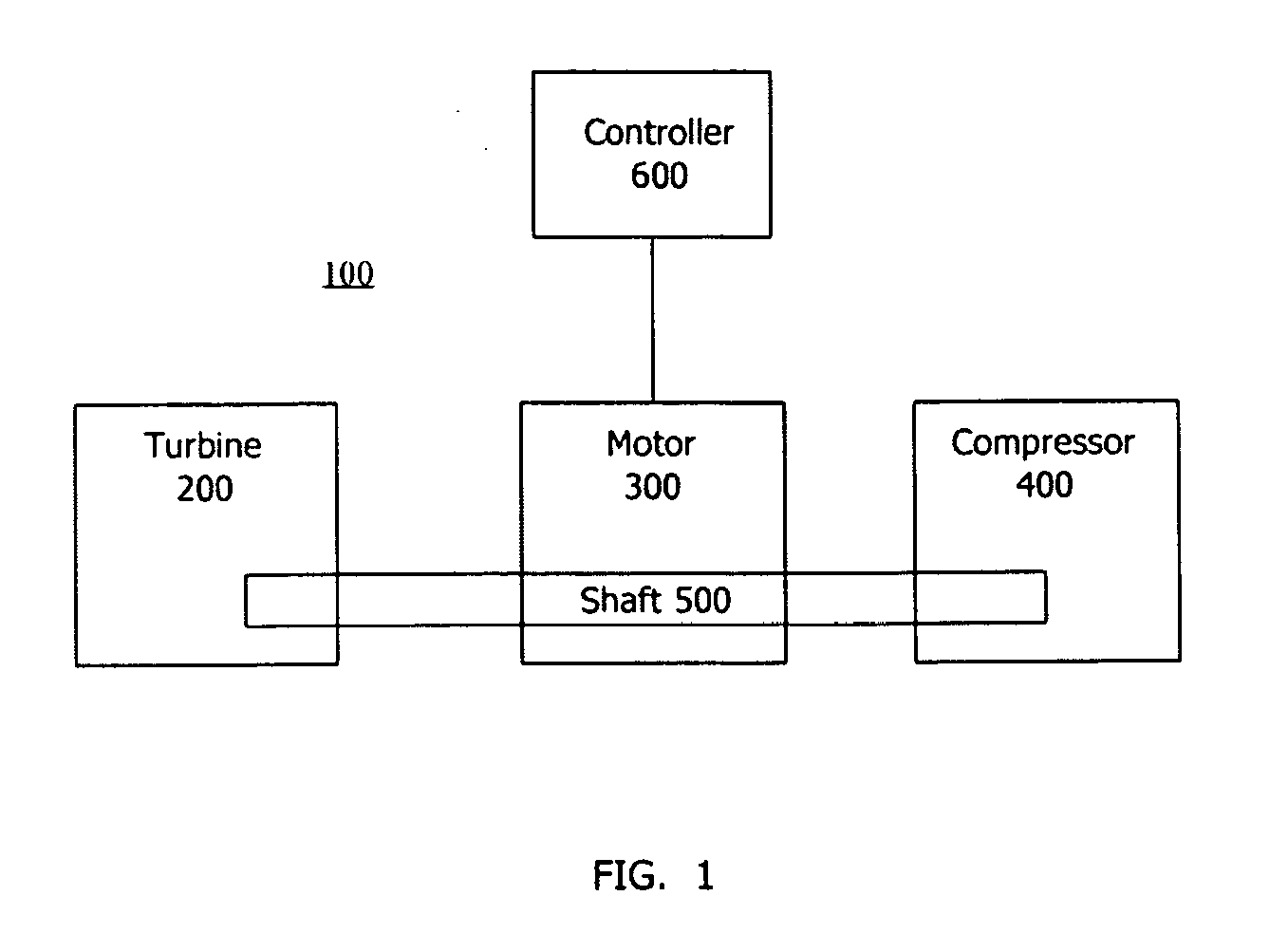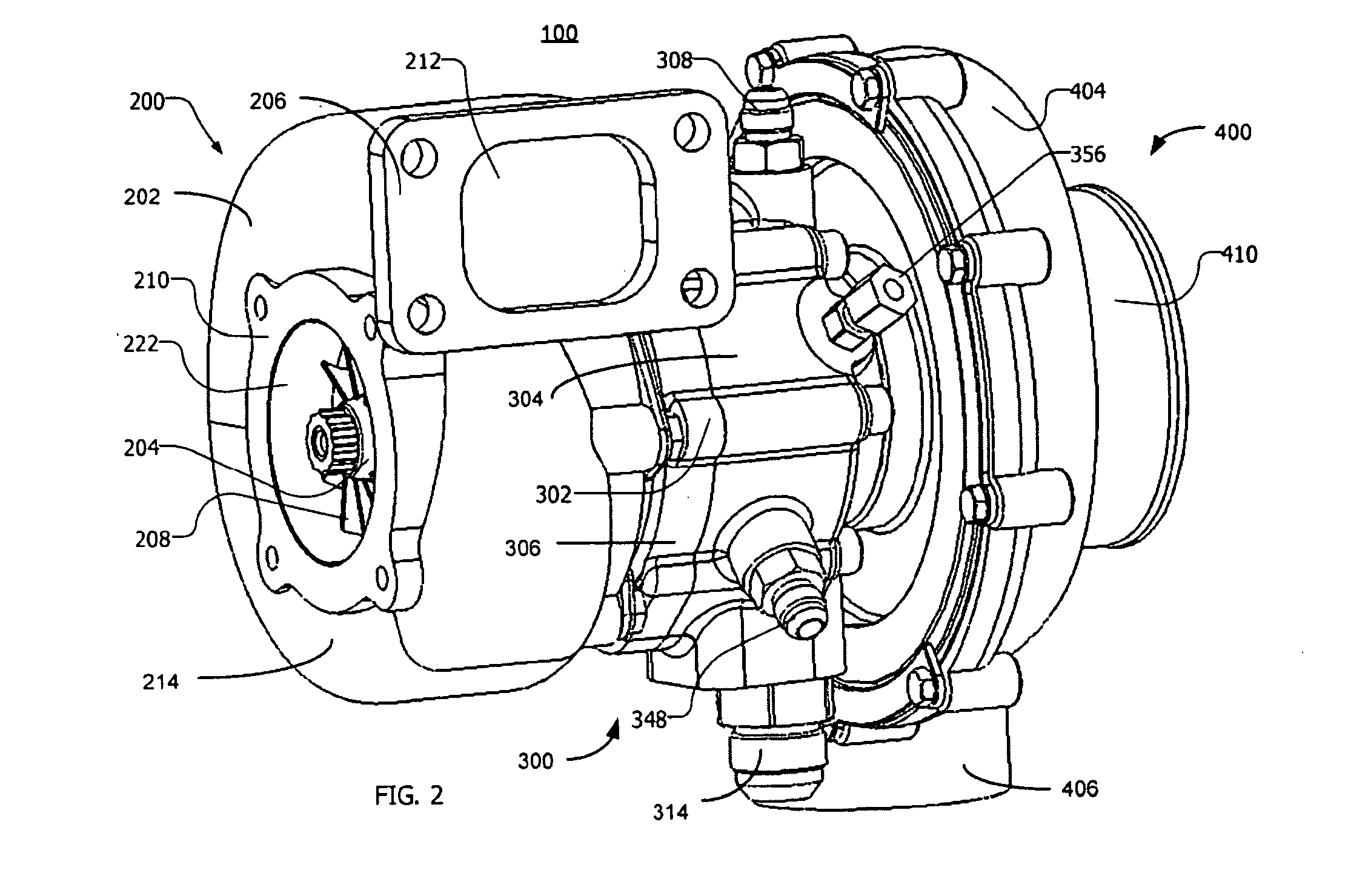Cooling an Electrically Controlled Turbocharger
an electrically controlled, turbocharger technology, applied in the direction of liquid fuel engines, positive displacement liquid engines, piston pumps, etc., can solve the problems of affecting the entire structure, few diesel engines in new vehicles today operate without turbochargers, and exhaust flow may not drive the turbocharger sufficiently
- Summary
- Abstract
- Description
- Claims
- Application Information
AI Technical Summary
Problems solved by technology
Method used
Image
Examples
Embodiment Construction
[0034]In the FIG. 1 block diagram, electrically controlled turbocharger 100 comprises a turbine 200, a compressor 400, a motor 300, a shaft assembly 500 and a controller 600. Motor 300 may be disposed between the turbine 200 and compressor 400, and shaft assembly 500 interconnects turbine 200, compressor 400 and motor 300. The turbine and compressor may be respectively secured to the motor to form a single unit. The turbine, compressor, motor and shaft assembly may have other relative physical arrangements. The controller 600 controls operation of the motor 300 through connection 602 (FIG. 5).
[0035]In the FIGS. 2 and 3 external perspective views of the electrically controlled turbocharger 100, housing 202 of turbine 200 includes inlet flange 206 at inlet 212. Exhaust gases from an engine (not shown) enter the inlet and flow through volute 214 (see also FIGS. 4 and 5). The volute may provide a spiral path for the incoming exhaust gases and, therefore, may have a decreasing dimension ...
PUM
 Login to View More
Login to View More Abstract
Description
Claims
Application Information
 Login to View More
Login to View More - R&D
- Intellectual Property
- Life Sciences
- Materials
- Tech Scout
- Unparalleled Data Quality
- Higher Quality Content
- 60% Fewer Hallucinations
Browse by: Latest US Patents, China's latest patents, Technical Efficacy Thesaurus, Application Domain, Technology Topic, Popular Technical Reports.
© 2025 PatSnap. All rights reserved.Legal|Privacy policy|Modern Slavery Act Transparency Statement|Sitemap|About US| Contact US: help@patsnap.com



